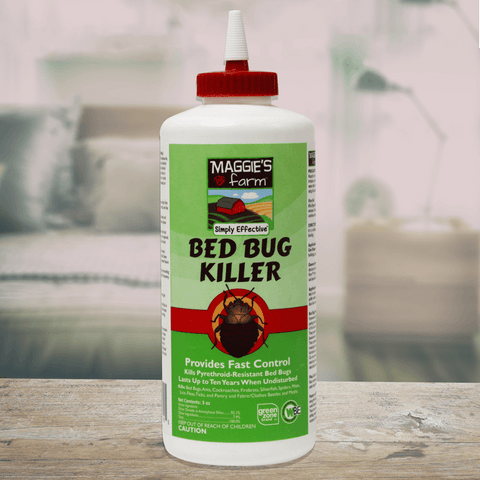The thought of tiny bugs taking over your home is sure to make your skin crawl. The first step to controlling a pest problem is correctly identifying the pest. This can be challenging when pests leave behind the same clues. Clover mites and bed bugs share a key infestation sign that can make it difficult to tell them apart. We’ve gathered information about clover mites and bed bugs to help you spot the differences between them.
Clover Mite 101
Clover mites are known for being tiny and bright red. These pests are less than 1mm in length. Like other arachnids, they have eight legs. However, their front two legs are longer than their other legs. Their placement near their head leads to them being mistaken for antennae. Clover mites emerge in spring when temperatures are still cool. They often sneak into homes by crawling on vegetation close to homes. These mites aren’t considered dangerous, but they can be a nuisance.
Bed Bug 101

Bed bugs are brown with a flat, oval body. They are about 5mm in length. Bed bugs feed on the blood of a host. Humans are their preferred host, but they will also use animals as a host. Bed bug bites can lead to red and itchy bumps. After a feeding, their bodies take on a reddish hue. Bed bugs are active at night and can infest homes year-round. These pests are great at hiding, which can make it difficult to spot them.
Clover Mite & Bed Bug Similarities
Clover mites and bed bugs aren’t similar in appearance. However, they still have a few tricks up their sleeves. One of the main concerns of a clover mite infestation is the red stain they leave behind when crushed. This spot is created from the pigmentation of their skin. Bed bugs also leave behind red blood stains when they are crushed. Bed bug droppings can also create dark stains. The spots of these pests can lead to confusion about which pest has invaded your home. These pests also share the ability to multiply quickly, which can lead to large infestations.
How to Identify an Infestation
Since clover mites and bed bugs share a common warning sign, it may not always be easy to know which pest has taken over your home. Thankfully, there are a few things you can look for to spot the difference between the two pests.
Appearance:
Bed bugs and clover mites look distinctly different. If you’re able to spot one of these pests, the color and size will help you correctly identify it. Bed bugs are brown and will be larger than clover mites. Bed bugs are about the size of an apple seed, while clover mites are smaller than a pinhead.
Location:
Clover mites don’t typically hang out near beds. Instead, they choose areas near windows and doors, especially on the sunny side of homes. A bed bug infestation will likely occur in bedrooms since this is where they can easily access a host. They will spread to furniture and fabric in the room.
Bug Bites:
Clover mites feed on plants and will not bite humans. When bed bugs bite, it can lead to itchy, red bumps that are often clustered together. They typically appear on areas that are exposed when sleeping like your arms and legs.
How to Get Rid of Bed Bugs & Clover Mites

If clover mites have invaded your home, it’s important to remember to not crush them. This will prevent staining your household items. Instead, you can use a vacuum or wet rag to remove them. You can also apply a plant-based insecticide spray, like our Yard Bug Spray, to your yard that will not only kill pests but also provide you with residual repellency protection.
Treating a bed bug infestation requires a few steps. You’ll want to wash and dry your bedding on high heat settings. Vacuuming can also help remove bed bugs and their eggs. Applying an insecticide dust, like our Bed Bug Killer, to your mattress, bedframe, and other areas where bed bugs can hide, will help to eliminate an infestation.
Being able to correctly identify a pest is the first step to eliminating an infestation. Though clover mites and bed bugs both produce red stains, there are other ways to tell them apart. If pests are giving you a fit, we have your back! Check out our Maggie’s Farm Simply Effective™ Pest Control products.
